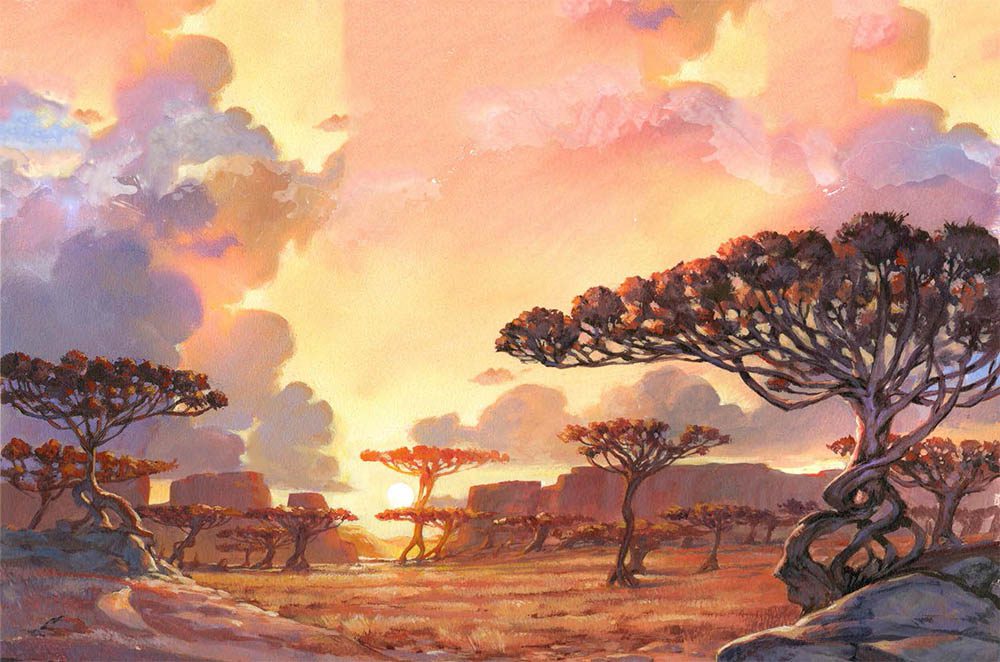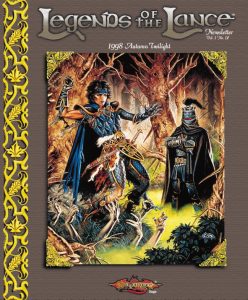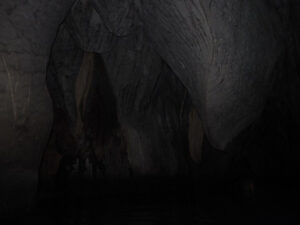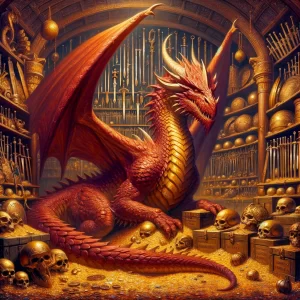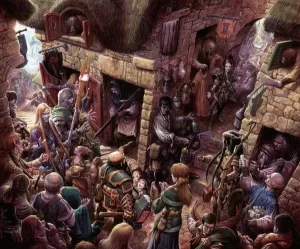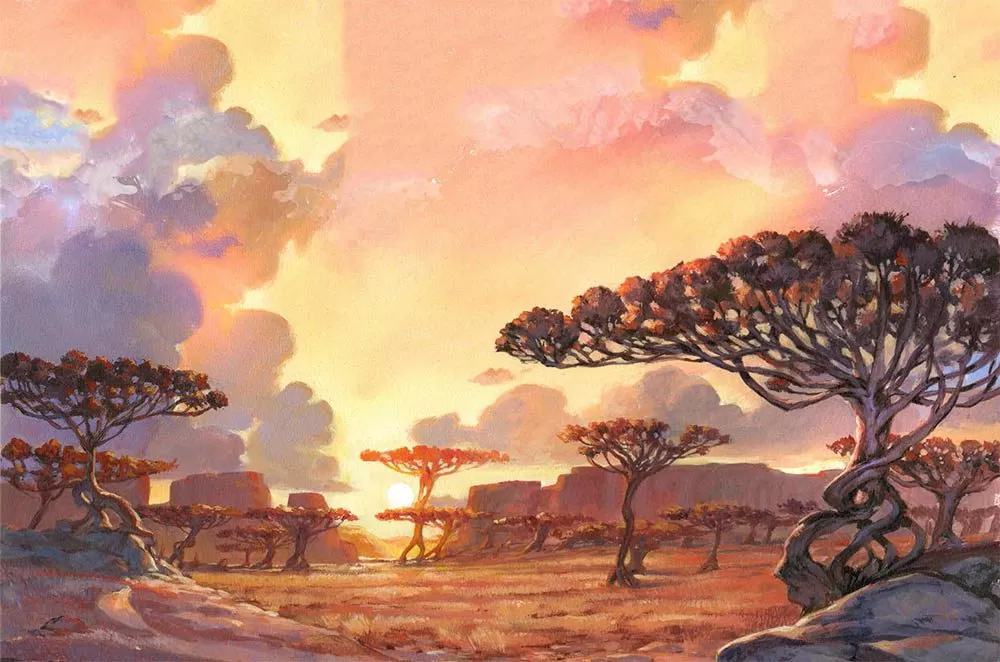
Savannas form the intermediate zone between sandy deserts and lush rainforests. These environments have two forms over the year: the scorching hot, arid land of the dry season and the blooming rain season. Most of the year, the land is dry, which is why the main types of vegetation are grasses, bushes, and scattered trees.
In some savannas, the cycle from dry to wet is even more dramatic, as the grasslands and woodlands transform into temporary wetlands when the high rainfall makes the rivers flood the plains. This kind of cycle makes farming unfeasible, so in these areas people usually raise livestock, primarily cattle, that can be moved out of the way once flooding starts. In savannas with heavy seasonal flooding, humanoids usually build their homes and lairs high up, if possible, and live in habitats that are temporary, if such highlands are unavailable.
Another defining feature of most savannas are brushfires, which happen during the dry season, and keep the vegetation low. Some trees are adapted to the fires so well that their seeds only grow after a fire and some even have adapted to promote fires with various methods, for example flammable oils produced in their leaves. Some birds are known to carry burning material to promote brushfires so that they can hunt the critters that escape the fire into the open. Humanoids also use fire to control their environment: brushfires provide ash for the soil, keep the land easily traversable, and aid in hunting.
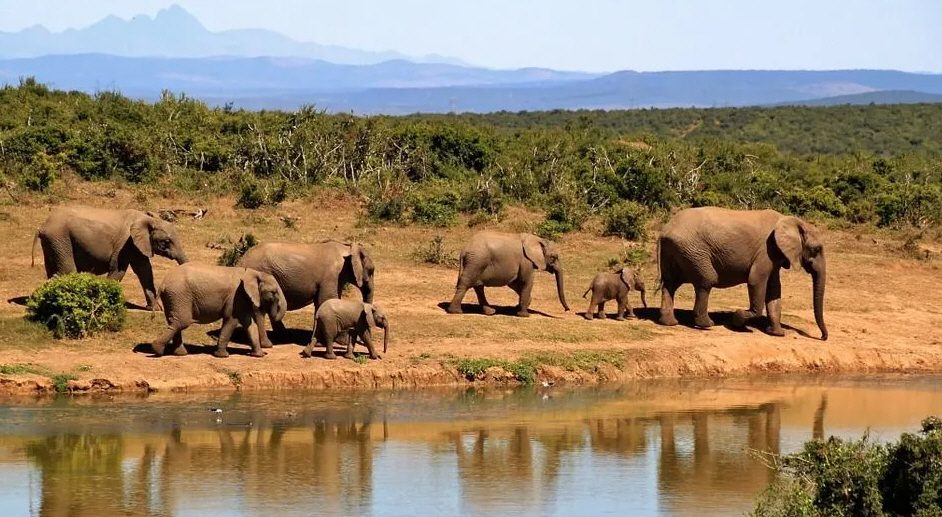
Sustenance is scarce in savannas, especially during the dry season, when water can seldom be found outside wells or muddy pits. Animals are either grazers or have adapted to eat and digest the plants that resist any attempt to consume them with many different methods, such as waxy leaves, thick bark, or thorns.
For humanoids, hunting can be a source of food but requires resourcefulness. Large-scale farming is difficult without a high level of organization, but sustenance farmers are commonplace. Farmers often grow their crops by utilizing slash-and-burn techniques, burning the vegetation of an area, farming the ash-enriched soil for a few years and moving on to another area and start the cycle again. Some have found fertile spots for their farms, which they can farm for extended periods. Many humanoids prefer to raise livestock instead of farming the land, since animals can graze on the grass that is inedible to humanoids.
And there are woodlands savannas. The most forested type of savanna is the savanna woodland. While these forests are still dry most of the year, there's more rainfall, and during the rainy season these lands could be mistaken for temperate forests. Still, even here the canopy is light, and trees are usually scattered since they compete for the same limited water supply during the dry season. The trees often have thorns or waxy leaves, which make eating them difficult for many animals. Tropical pines, palms and acacia trees are common.
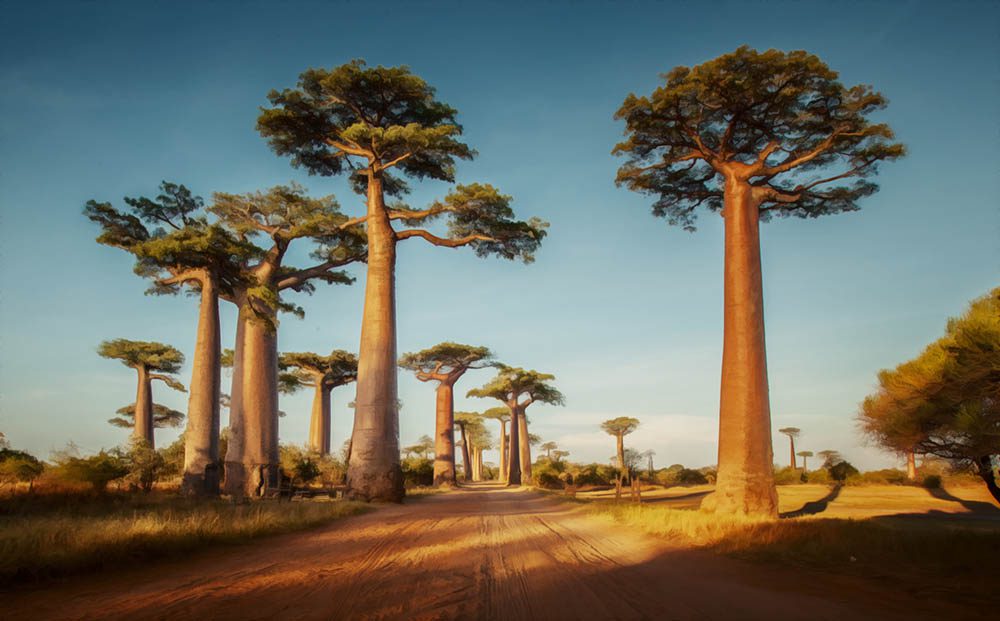
One peculiar sight is the baobab tree found in some areas. The trunks of some species of baobab grow as high as 100 feet, but even more impressive is the girth of the tree: largest baobabs can have a circumference of 150 feet and a diameter of 50 feet. Such massive trees are excellent vantage points for flying creatures such as harpies. Small creatures, most notably goblins, have also been known to build outposts up in the branches of baobab trees, sometimes even carving the trunk hollow for habitats or building rope bridges from tree to tree to form an entire treetop village.
While the leaves of the trees can provide some cover from the scorching sun, underground it is always comparatively cool. Many of the larger trees have massive root systems, which can support and hide small cavern systems. Kobolds are known to use the support of the roots when digging for their lairs.
The trees provide little or no cover, but if there is tall grass, small creatures are either lightly or heavily obscured when moving through it. Some areas are covered in nearly impenetrable thickets of elephant grass, which can grow as high as 15 feet tall. Moving through such thickets takes hours and requires sharp tools such as machetes to cut through.
And there is savanna tall grass called Elephant Grass that is a common sight in in many kinds of savannas, but in woodlands savannas that have higher precipitation elephant grass tends to grow as high as 15 feet and an inch thick. The grass provides total cover and heavily obscures anyone that is behind at least 5 feet of grass.
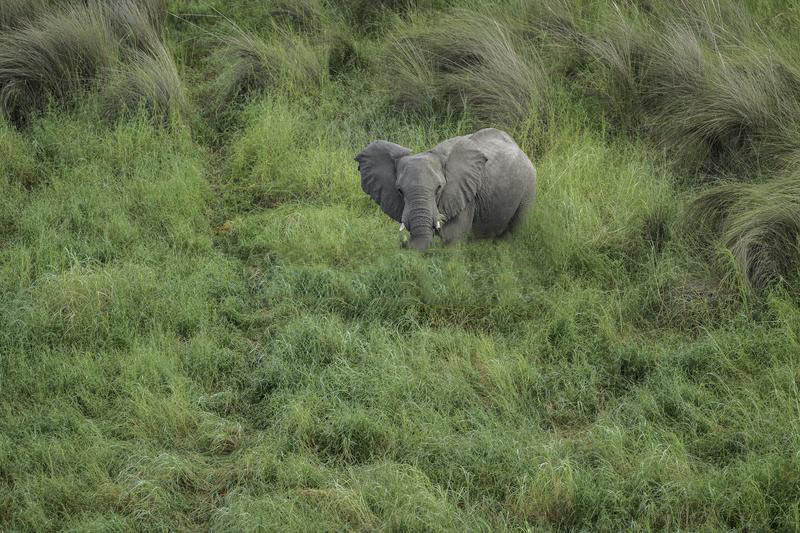
Moving through elephant grass without magic requires a short slashing weapon such as a hand axe, scimitar, short sword, or a sickle and takes one minute per 5 feet to clear. Once cleared, it is treated as difficult terrain. Moving through 1 foot of elephant grass without clearing it costs 6 feet of speed - so you can cover only one sixth the normal distance in a minute, an hour, or a day. Large or larger creatures treat the elephant grass as difficult terrain.
Some creatures, such as goblins and kobolds are known to build complicated, maze-like paths into elephant grass to hide their lairs. The paths are difficult to navigate and going straight through takes a lot of time, which the defenders can use to organize. Often the paths have small niches, hidden tunnel entrances or other places to hide, so that attackers can be outflanked. Small, concealed trap doors may hide tunnels or just small holes where a defender can stay behind to surprise the enemy. Some paths may be full of stake pit traps.
If the elephant grass serves as cover but not concealment, the surrounding area may be covered with sharpened stems of elephant grass. Moving through them is not harmful but it is painful and causes the area covered in such obstacles to be difficult terrain.
Of course, let's not forget about the thornbush savannas. The most difficult to traverse subtype of savanna is the thornbush savanna. As the name would suggest, this type of savanna is covered in nigh impenetrable bushes, which in turn are covered in thorns. Thornbush savannas have very long dry seasons, so the plants must save water as much as they can. The thorns of the trees and bushes are meant to dissuade animals from eating the precious green leaves that they produce.
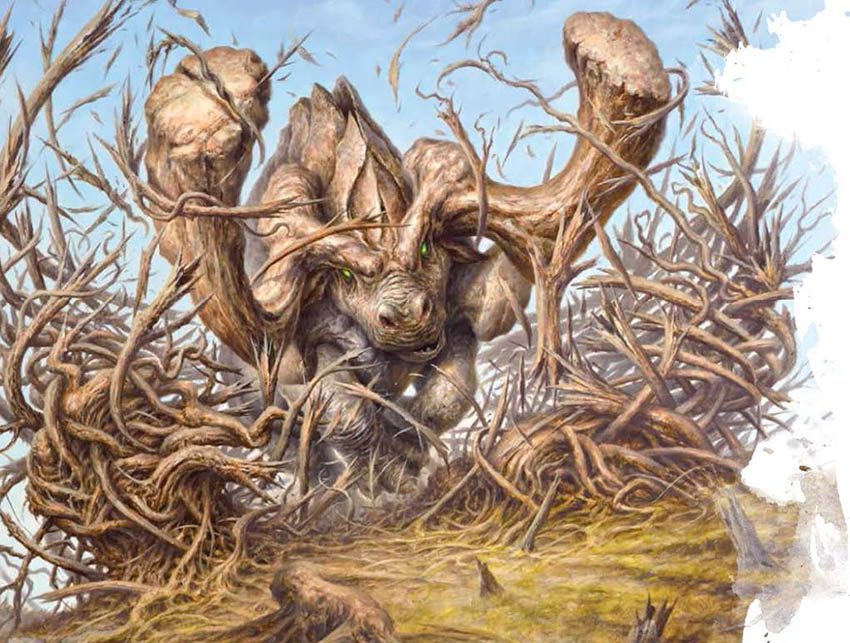
These are the domains of elephants, rhinos, and buffalo, who clear through the bushes and form pathways. These animals don't plan their routes, so the pathways can get labyrinthine at times and getting lost is a common occurrence. Going through the bushes is usually not an option, unless someone spends considerable time and effort to clear smaller pathways. The grass is short, or nonexistent, trampled by the big animals.
here are some trees in these areas, but they are also thorny, or their leaves are covered in wax as well. Giraffes and giant ground slothscan eat and digest the leaves and small birds can move through the thorns and hide their nests in these naturally protected places. Small creatures, such as goblins, may place the tunnel entrances to their lairs inside thornbushes, forcing medium or larger creatures to crawl to enter.
Thornbushes provide cover for all kinds of creatures, but are also great places to hide cult shrines, bandit camps and other sites that are best hidden away from the well-trodden paths. These locations are also an excellent location for ritual trial sites for trials by ordeal: the thornbushes can be relatively easily molded into different kinds of shapes and sizes to create various trials that test the mettle of those who are put through the trial.
Local people create ritual trial sites in the thornbush that serve many kinds of purposes.
It takes years, or even decades to create a thornbush trial and the locations are considered sacred. Protecting these locations from large animals is of utmost importance to the people who use them.
Some of these sites are used in initiation rites into a warrior cult, others are used to test the physical prowess of the young to determine their place in the community. They can also be used as a non-violent method for settling differences. Two people are put through the same test, and a water clock is used to determine who was the fastest. This is the most common type of trial of the thornbush.
Then there are grass savannas. Grass savannas are open plains with a few trees dotting the landscape, with massive hordes of beasts grazing and migrating following the seasons. The soil is dry, and vegetation is trampled and trimmed by the grazing animals, so that the grass is tall only in some locations where it has a chance to grow fast. Because of this, visibility is typically good in these areas.
Escaping the heat in grass savannas is difficult during the dry season. Water sources tend to dry up and trees are often hundreds of feet apart from each other. Beasts and monsters that can burrow build their lairs underground. Zebras, wildebeests, and gazelles (deer) are a common sight, as are rhinos, elephants and the beasts that hunt them: lions, tigers, cheetahs as well as monstrous hunters such as ankhegs. Because the herbivores don't have anywhere to hide, flying beasts such as griffons or wyverns and even rocs also tend to hunt here, descending from the highlands to pick up a gazelle to bring back to the nest.
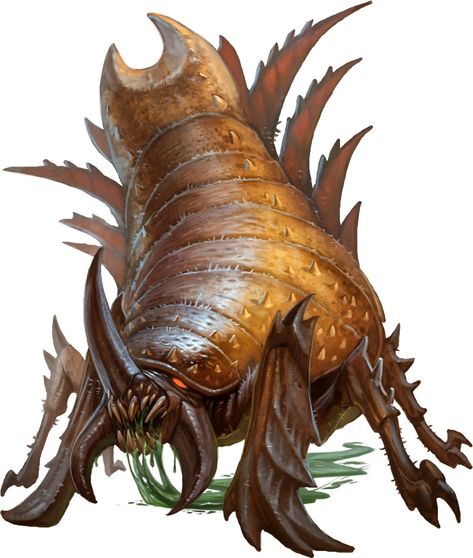
Since hunting game and avoiding predators in the grass savanna is relatively easy for clever humanoids, they often choose this environment over the other savanna types, despite the heat. Farming the dry earth of the savanna is difficult, so humanoids are usually pastoral or hunter-gatherers. They use the beasts roaming the lands as mounts, but many of the animals, such as zebras, are difficult to domesticate unless magically charmed.
One of the most striking features that can be seen dotting the landscape in many grass savannas are the high ventilation towers that termites build, called cathedral mounds. Termites are a vital part of the cycle of life here, molding the earth and giving it life. Even regular termites build impressive mounds, many of them over ten feet tall, but the cathedral mounds built by giant termites can be a hundred feet tall and be seen for miles around.
People Who Live in the Savannas.
Life is hard in the savanna for humanoid peoples. During the dry season food and water are hard come by, and the rain seasons often ravage the lands with floods that take away all the fertile soil the people have toiled to improve. The savannas are also home to massive monsters and dangerous beasts that roam the lands seeking food.

Therefore, most communities in the savanna are small villages of subsistence farmers. Bigger communities, such as cities, are usually built on the coast or by major rivers, where they can trade with the outside world and sustain themselves better. Some larger communities use ingenious methods to keep themselves safe and fed inland, but such communities are often susceptible to disasters, resulting in ruined cities dotting the lands here and there. These places may become the home of another community wishing to try to survive in that same location, but many consider such endeavors doomed to fail; luck is not something you should build your home on in such a precarious environment.
The most common strategy is to live a nomadic life or herd animals, such as goats, horses, or cattle. This is supplemented with hunting, gathering or farming. But the savanna is a place of thousand different lifestyles, many of them hundreds of generations old.
Larger communities in the savanna are often city states, although larger kingdoms and other realms exist. The savanna sets some restraints to them, however.
The biggest problem larger communities face in the savanna is farmland. There's a lot of open land, but it's rarely suitable for long term farming. Because of this, most population centers in savannas are located near large rivers or by the coast. Access to water is also often a reason for conflicts among the different communities and states.
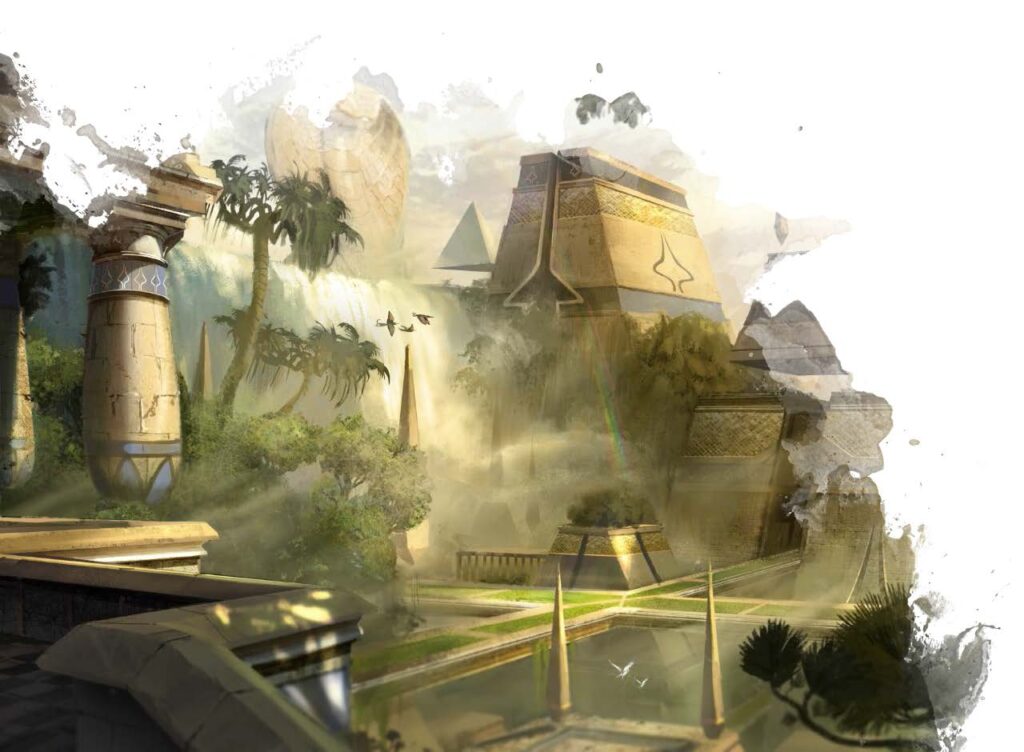
River communities utilize the flooding river during the wet season by building intricate canal systems. River communities are often centrally lead or have efficient bureaucracies to maintain massive granaries that are used to feed the people during the dry season.
Coastal cities rely on trade and fishing for the most part but must usually also have some form of farmland supporting it. Often the farmland is scattered, and the community must use either trade or roaming tax collectors and soldiers to maintain a steady flow of food to the city, which requires a working system of bureaucracy and infrastructure. Because of this, they are the central hubs of the surrounding lands.
Overland trade is based on caravans. They trade small, easy to carry luxury items from realm to realm. Caravans with monstrous beasts of burden may carry heavier items, but this is less common. In the cities, the hub of trade of local and exotic merchandise is the bazaar. It is often a long road or a complex of buildings, where permanent shops mix with carts and other temporary stands to form a bustling center of commerce.
